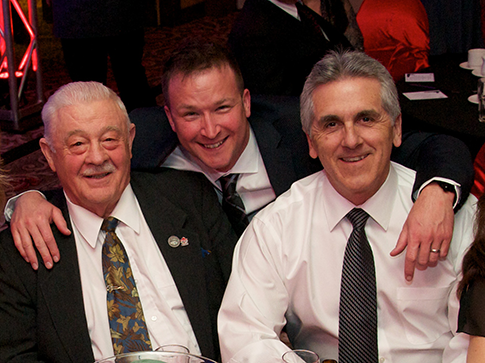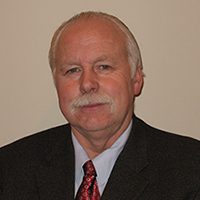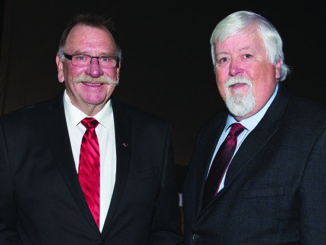
Meet Jeremy Hallman, Executive Director, SMACNA-BC
Other than a paper route, Jeremy Hallman’s first real job was working weekends at a sawmill when he was 15. It was a natural fit, since his father, grandfather, and most of his uncles worked in mills as tradesmen in a unionized environment.
“The conditions and pay seemed good to me, but my dad had always made me promise not to make a career out of it, as he felt there was no future in forestry,” Hallman says.
The gig started in cleanup and moved into a junior millwright position that had him greasing the mill’s moving parts. While learning how things worked, he also worked with some rough fellas who didn’t mince words.
“My uncle was head millwright, so I think they took pleasure in abusing me,” he says. “If I had been more sensitive, I don’t think I would have lasted long!”
In grade 12, he met Mike Sierpina, who worked as a foreman for Craig Benson at Paramount Sheet Metal. “He asked me what I wanted to do after high school and I had no idea, but I did have interest in the trades from my time in the sawmill,” Hallman says. “I figured it couldn’t hurt to start a trade since I didn’t have the grades or interest to continue to post-secondary. I started in 1996 as a ʻmaterial man’ and became an apprentice later that same year.”
While he was taking night courses at the Sheet Metal Workers’ Training Centre, work slowed down at Paramount, so then-lead instructor Wayne Fagrie called Apollo Sheet Metal to see if Hallman could go there “on loan” for six weeks. Spoiler alert: those 6 weeks turned into 24 years.
In the winter of 2000, Hallman became a Red Seal journeyperson sheet metal worker. By then, he was running smaller projects for Apollo, but in time, he realized he was drawn to industrial work.
“I enjoyed working in breweries, pulp and paper plants, and anything with high work and cranes,” Hallman says. “I imagine that a lot of this stemmed from my sawmill experience. I liked the variety and the camaraderie that seemed to come with this type of work.”
As he delved into industrial/custom work, Hallman became interested in AutoCAD. “I signed up for a night school course at the Sheet Metal Workers Training Centre and was able to get my hands on a student version that I could use at home,” he says. “I stumbled through it myself for about a year and eventually went to BCIT for their Level 1 & 2 programs.”
Around the same time, Apollo purchased what was then called TSI software and is now owned by Autodesk. Apollo purchased the estimating, detailing, and fabrication components and asked if Hallman was interested in coming into the office full time.

Working on the same floor as the estimators, project managers, and owner, he slowly came to realize that there was more to the company than his own division.
“While detailing, I was exposed to more of the business side of things,” Hallman says. “I started becoming more interested in the project management side. I knew that it would enable me to get back out on job sites and see progress through to completion, which was something I missed.”
Apollo Sheet metal was always heavily involved in and a strong supporter of SMACNA-BC. Hallman attended the SMACNA Business Management University program in Tempe, Arizona, and learned a great deal in those four days.
“It reignited my desire to get into the project management side as quick as I could,” he says. “I pushed hard when I got back and transitioned from CAD and detailing into project management.”
At the same time, Hallman started attending the SMACNA-BC AGM and Convention and monthly dinner meetings. At a dinner meeting in 2012, Hallman’s predecessor, Bruce Sychuk, was recruiting volunteers for a newly formed Young Executive Committee.
“I kept my hand down during the initial ask but approached him right after the meeting,” Hallman says. “We met as a group once a month to solve all problems in the sheet metal industry (and maybe have a beer or two afterward). I believe this helped lay the groundwork for where I am today.”
Hallman spent the next 12 years working in project management for Apollo. He started off small and slowly, building up to some of the bigger jobs. He became involved in selecting and purchasing new equipment for the shop and software and technology in the field.
“My favorite part of the job in the last few years, though, was working with new and young foremen,” he says. “We—like everyone else—had a lot of very talented, experienced people retire, and there was concern about the future. I found the next generation of people to be a breath of fresh air. They were excited for the opportunities, embraced the technology, and were open to new ideas.
In March of 2022, Hallman heard that Sychuk was retiring from his position as executive director of SMACNA-BC after 24 years of service. “I knew it had been 24 years because I had watched him show his replacement around Apollo when I was an apprentice on my ʻsix-week loan’,” Hallman says. “I did not want to leave Apollo, but knew a job like this would likely never come up again in my career. After many sleepless nights and discussions with my wife, I applied for the position and was successful.”
Hallman’s vision for SMACNA-BC going forward is to continue to build on the relationships that Jim Paquette, former business manager-FST for Local 280, and Bruce Sychuk created over their tenures. “I think we can all achieve more if we can work together and try to see things from each other’s side,” Hallman says. “I hope that my time working on the sites and relationships I’ve built over the years will help facilitate this.”
He is also striving for greater involvement from the SMACNA-BC membership and to see what the group needs collectively.
“This will allow me to focus my attention in the right areas and find programs and educational content,” he says. “I remember the excitement after attending a SMACNA program. I want to help create the fire in the next generation that will help take our contactors and workers to the next level.” ■



